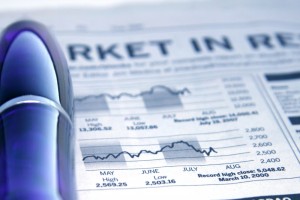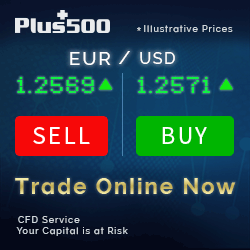 CFDs are one of the newest vehicles for financial trading and speculation available. Created only about 20 years ago, CFDs have quickly become one of the most popular choices for traders around the world for a wide variety of reasons. These include relatively low cost, quick and easy transactions, and the ability to trade CFDs on margin.
CFDs are one of the newest vehicles for financial trading and speculation available. Created only about 20 years ago, CFDs have quickly become one of the most popular choices for traders around the world for a wide variety of reasons. These include relatively low cost, quick and easy transactions, and the ability to trade CFDs on margin.
CFD stands for contract for difference. At the most basic level, a CFD contract simply says that you open a position (buy a security) at price X and sell it at price Y, the difference between the two is your gain or loss. Thus, you enter into a contract for the difference in the purchase and sale price of a security.
In essence, it really is that simple. However, as with all forms of investment, there are inherent risks involved and CFDs are certainly no different. In fact, they are quite risky in terms of investing. Because of the low margin requirements, it is very possible to lose more than your initial investment in a very short amount of time. However, like most “risky” investments, the payoff can be quite incredible. And that, of course, is the great draw of the CFD.
Contracts for difference are available over-the-counter (not through an exchange such as the London Stock Exchange) in most countries throughout the world. They are not available in the United States, unfortunately, due to SEC regulations. However, in countries they are offered, CFD contracts are still available on US based equities and securities.
How CFD Traders Make Money
If you purchase a contract for difference, you are said to be long on that particular security. If you are long, you expect the price of the security to rise, since you control shares of it. As the price rises, you make money. If the price were to fall instead, you would lose money on a long position.
The other side of the coin is to be short on a security. You can sell CFDs short, which basically means you sell the security without even owning it. In this case, you expect the price to go down. When it goes down far enough, you can purchase it, thus closing out the position and making money. If the price rises, you lose money, because you will eventually have to purchase the security to close the position. Technically, your loss could be unlimited, because the price could just keep rising and there is no expiration date on a CFD. That is one reason that trading CFDs short can be very risky.
CFD Trading
Contracts for difference are generally traded on margin. This allows for a relatively small investment to control a large amount of a particular security. In fact, for a CFD on any particular stock, the margin requirement may be as small as 3%, typically no more than 15%.
So for example, if XYZ Stock was $155 per share, and we wanted to open a CFD position for 100 shares, the total value would be $15,500. If our margin requirement were 6%, then we would only need $930 to control 100 shares of XYZ.
If the price of XYZ went up to $170 per share, an increase of $15, the total value would then be $17,000. At this point we could close the position, taking a profit of $1500 on the contract. Not bad at all for a $930 investment.
On the other hand, if XYZ dropped to $140, we would be $1500 in the hole and have to decide whether or not to keep the position open, or close it and cut our losses. If we keep the contract open, we will have to add more to the account to meet the margin requirements.
Margin is settled each night, so if we have a loss of $1500, then we would have to pay $570 on top of our margin that was in our account ($570 + $930 = $1500). That would leave us with a $0 balance. So then, we would also have to meet a margin requirement of 6%. Since the new value of the securities we hold would be $14,000, our 6% margin would be $840. In all, we would have to provide $1410 ($840 + $570) out of pocket in order to keep our account in good standing. We could also choose to just close the account and only pay the additional $570 (plus fees and expenses).
CFD Commissions and Expenses
There are few expenses involved in CFD trading as well. Most brokers charge a commission for each CFD trade. This varies a bit from one broker to another, but generally is between .1% and .2%. Some also charge a minimum commission, usually no more than $20.
Alternatively, some brokers do not charge a commission, but instead make money on the spread. The spread is the difference between the buy price and sell price that brokers charge or pay. For instance, they may buy ABC Stock at $48.20 and sell at $48.29. The spread would then be $.09 per share.
Another expense to bear in mind is the overnight finance charges. This is charged when a CFD position is kept open overnight. It is a finance charge on the margin held in your account, since this is basically a loan from the broker to the trader. This rate varies too, but is traditionally a small percentage above the LIBOR rate index.
As you can imagine, CFDs are a very exciting way to trade securities. They offer the potential for huge gains in a short amount of time and with a relatively small amount of capital up-front. However, like all investment opportunities, be sure you have done your research and are in a financial position to trade with the amount of risk involved in CFDs.



